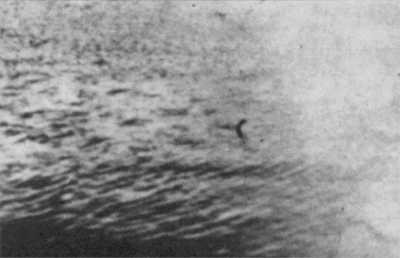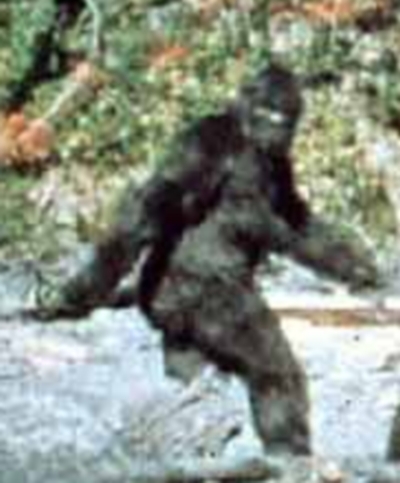
Samuel Arbesman, over at Wired, writes an article about hoaxes that begins,
September 28, 2012

Samuel Arbesman, over at Wired, writes an article about hoaxes that begins,
It was an accidental hoax. A screenshot from Back to the Future got passed around this summer, showing that June 27, 2012 was the date when the DeLorean hurtled forward in time. After a certain period of excitement, posts, and retweets, people soon realized that the image had been modified: the “actual” date wasn’t for three more years. Turns out this wasn’t even the first time this had happened. A similarly fudged screenshot of the DeLorean’s time counters spread across the internet just two years before (though that was an intentional hoax).
Not only were people spreading incorrect information, but the collective internet consciousness didn’t even recognize the return of the same error. And even when we do recognize such errors, we can’t fix them as easily as we might like. Just ask Philip Roth about how difficult it was to correct an entry on his own Wikipedia page he had to publish an open letter in the New Yorker to satisfy the requirement for a more reputable secondary source.
“Paradox of Hoaxes: How Errors Persist, Even When Corrected“
Although I completely understand what Arbesman is talking about, and it certainly does happen, what bothers me the most are the hoax claims that are themselves hoaxes, mistakes, historical misinformation, and media inventions.
The two that bug me the most in cryptozoology are these:

(1) “We know the Loch Ness Monster Surgeon’s Photo is definitely a hoax and we know that due to a deathbed confession.”
Of course, this persists despite Princeton-based journalist and investigator Richard Smith’s detailed debunking* of the hoax claims, noting that Ian Wetherell’s stepbrother Christian Spurling had a family ax to grind, didn’t die until two years after he was interviewed by the “hoax theorists” Alastair Boyd and David Martin, and the design of the 1930s toy submarines are in question, as far as the source of a photograph hoax.

Also, debunkers don’t explain the “second Surgeon’s photo,” which shows something diving. Furthermore, one of the remarkably understandable reasons for the initial secrecy of the photos by the “respected London doctor named R. Kenneth Wilson,” was that the surgeon was at the lochside due to the fact he was having an affair and he was with the young lady at the time.
The other one…
(2) “The Patterson-Gimlin video is a fake because one of the guys taking it said it was a hoax in his deathbed confession.” Or, “I heard ten years ago that that guy Ray Wallace on his deathbed said he was the dude that took this video.”

Again, there was no deathbed confession from Roger Patterson about the film, not video, being a created event, fake, or hoax. Bob Gimlin is still alive, and remains humble but straightforward in this being an extraordinary encounter with a large, hairy, female unknown hominoid. Ray Wallace died in 2002, and his children found fake footprints in his garage, but they had nothing to do with the 1967 film. Wallace used his foot fakes for some roadside prints in 1957 in Oregon and 1959 in California. In the 1970s, Wallace took a hoax film with his wife in a suit, but the media, after his death, have confused the two films. [See Loren Coleman (2007). “Bigfoot’s Bogus Burial: the Media and Other Wallace Myths”. In Greg Taylor. Darklore Volume 1. Brisbane, Australia: Daily Grail Publishing. pp. 95–109.]
Other claims that the Patterson-Gimlin 1967 footage was of a “massacre,” a “man in a suit,” and/or “made by a Hollywood special effects artist” have all fallen by the wayside, explained by looking at some facts.
To this day, I hear from people who falsely claim that the “Surgeon’s Photo” and the “Patterson-Gimlin footage” have both “definitely been proven” to be hoaxes.
++++
Richard Smith’s letter to Joe Nickell/Skeptic Inquirer was widely shared throughout the Internet:
To the Editor:
In “Nessie Hoax Redux” (March 1996), Joe Nickell ignores the greater issue raised in my November 1995 article in Fate magazine — the unacceptable double standard applied during debates over cryptozoology.
Self-proclaimed conspirator Christian Spurling waited more than a half century before claiming to have helped stepfather M. A. Wetherell use a modified toy submarine to fake a “Nessie” image in 1934; he never presented a shred of corroborating evidence to support his allegations; he was suspiciously vague when asked about a second, lesser-known photo; and he even failed to identify the bay where the hoax supposedly took place.
What if Spurling had claimed to have really seen and photographed a large unknown animal? Would this level of “proof” still be acceptable? Of course not. But because he was debunking Lt. Col. R. Kenneth Wilson’s famous photo the rules are very loose indeed. His mere say-so is okay. Ronald Binns excuses lapses and contradictions in Spurling’s story by suggesting that he was an old man when he finally gave his account and “maybe just confused.” (Of course, scientific studies have shown that it is short term, not long term, memory that typically fades with age.) Worse still, Binns and other apologists are ready to blithely modify Spurling’s account whenever problems arise — “Maybe he was right about how the model was made but wrong about the dimensions,” Binns hypothesizes — until what should be consistent, definitive testimony becomes conveniently malleable.
Spurling’s supporters allow no such excuses for Col. Wilson, who denied on occasion late in life that he ever photographed a Loch Ness monster; not allowing that this was likely his way of getting rid of pesky reporters. (In fact, Wilson stuck by his original story when interviewed in the 1960s by Member of Parliament Sir David James.)
Nickell calls Binns’ The Loch Ness Mystery Solved “the definitive skeptical book on the subject.” That honor should go to Steuart Campbell’s The Loch Ness Monster (Aquarian Press, 1986). Campbell is the best and most thorough of the Nessie debunkers — therefore it is highly significant that he too rejects Spurling’s toy submarine story. In a letter to the CSICOP magazine Skeptical Inquirer (“Nessie ‘model’ explanation suspect,” March/April 1995), Campbell notes: “In their eagerness to undermine paranormal claims, writers in SI exhibit a tendency to accept any normal explanation, whether or not there is adequate evidence.”
How true. There have certainly been many hoaxes at Loch Ness, and we must all remain vigilant against bunkum. But rationality demands that we have one stringent standard of evidence for proponent and debunker alike, and that we never abandon a healthy skepticism to embrace stories as flimsy and unsubstantiated as the one told by the late Christian Spurling.
Sincerely,
Richard D. Smith
About Loren Coleman
Loren Coleman is one of the world’s leading cryptozoologists, some say “the” leading living cryptozoologist. Certainly, he is acknowledged as the current living American researcher and writer who has most popularized cryptozoology in the late 20th and early 21st centuries.
Starting his fieldwork and investigations in 1960, after traveling and trekking extensively in pursuit of cryptozoological mysteries, Coleman began writing to share his experiences in 1969. An honorary member of Ivan T. Sanderson’s Society for the Investigation of the Unexplained in the 1970s, Coleman has been bestowed with similar honorary memberships of the North Idaho College Cryptozoology Club in 1983, and in subsequent years, that of the British Columbia Scientific Cryptozoology Club, CryptoSafari International, and other international organizations. He was also a Life Member and Benefactor of the International Society of Cryptozoology (now-defunct).
Loren Coleman’s daily blog, as a member of the Cryptomundo Team, served as an ongoing avenue of communication for the ever-growing body of cryptozoo news from 2005 through 2013. He returned as an infrequent contributor beginning Halloween week of 2015.
Coleman is the founder in 2003, and current director of the International Cryptozoology Museum in Portland, Maine.
Filed under Bigfoot, Cryptomundo Exclusive, CryptoZoo News, Cryptozoologists, Cryptozoology, Hoaxes, Loch Ness Monster, Sasquatch